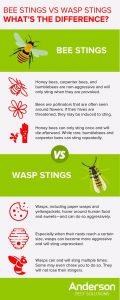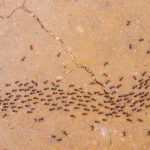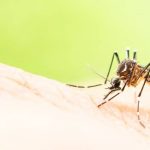
If you have ever been stung by a bee or wasp before, you surely try to avoid them when you see them around. Bees and wasps usually only sting when provoked, but many people have experienced a chance stinging when they were just minding their own business. You might be stung on the back of your neck without ever even seeing the culprit.
If you’re wondering whether you’ve been stung by a wasp or a bee in Illinois & Indiana, read on. We will cover the differences between bee stings and wasp stings and what could result from each.
Bee vs Wasp Stings: Telling Them Apart
Although the results of their stings can feel quite similar, bee stings and wasp stings do not work the same way. These are the main differences between wasp and bee stings:
- Stinger: When you’re stung by a bee, their stinger ejects from their body into your skin, rendering the bee unable to sting again. On the other hand, wasp stingers remain intact and attached to their bodies, allowing them to sting multiple times.
- Volume: A bee only stings once, but it injects around 50 micrograms of venom into your body in the process. Wasps inject around 2-15 micrograms per sting, but they can sting you multiple times in a row.
- Venom: Bees and wasps’ venom contain different allergens. However, both of them cause our bodies to release histamine, which creates an external reaction that is similar to hives.
 Do Wasp and Bee Stings Cause Allergic Reactions?
Do Wasp and Bee Stings Cause Allergic Reactions?
Both wasp and bee stings are able to cause allergic reactions. Given that they contain different allergens, you can be allergic to one kind of sting and not the other. Most bee and wasp stings will only result in mild symptoms, such as:
- Initial pinching pain and lingering soreness
- Redness and itchiness
- Swelling
However, severe allergic reactions are more common than we would hope for. Thousands of people are hospitalized every year for symptoms resulting from bee and wasp stings. The most common type of allergic reaction caused by bee and wasp stings is called anaphylaxis. Some of the most severe symptoms of anaphylaxis include:
- Swollen throat and tongue
- Difficulty breathing
- Fainting
- Vomiting
- Itchiness and pain across the body
Bee and Wasp Control Services in Illinois & Indiana
As you can see, both bee and wasp stings are nothing to play around with. If you have noticed an increasing number of stinging insects around your yard and aren’t sure what they are, ask your local pest control company for help identifying them. The bee and wasp experts at Anderson Pest Solutions can determine which species of bee or wasp you are dealing with and take the appropriate measures to remove them from your property. For a free quote on nest removal, contact us today!





